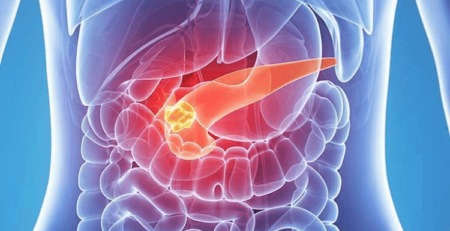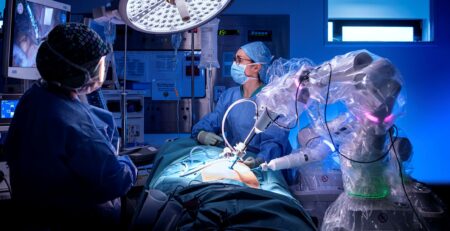[vc_row][vc_column][vc_column_text]
Transcranial Magnetic Stimulation (TMS) has been around since 1985, but only recently has it been used to treat mental health issues like depression or anxiety. The purpose of this article is to explain how TMS works, what types are available and how they’re used on patients.
What is transcranial magnetic stimulation?
Transcranial magnetic stimulation (TMS) is a non-invasive and painless technique that uses electrical currents generated by a magnetic field to induce activity in specific areas of the brain (stimulating nerve cells). It’s used to treat depression, and it’s safe and effective for many people who have not responded well to other treatments.
TMS has been approved by the FDA since 2009 as an option for treatment-resistant depression (TRD), which means it doesn’t work well enough when taken alone or with other medications like antidepressants.
How will a magnet affect how the brain works?
Electricity and magnetism are two fundamental physics concepts that are used in trans-cranial magnetic stimulation.
The brain cells in your brain and nerves (known as neurons) use tiny amounts of electricity to send and relay information throughout your brain and body. Bringing a magnet close to your brain can influence your brain’s electrical activity. That’s why transcranial magnetic stimulation targets specific parts of your brain, especially those related to your emotions, internal decision-making, feelings of pleasure, etc.
The magnetic field generated by the TMS device is passed through a small coil, which is placed against your scalp. The coil passes the magnetic field through the brain to stimulate neuron activity in a specific region of your brain. This magnetic field stimulates the brain and produces a response, which can be measured with an electroencephalogram (EEG). The generated magnetic field is not strong enough to cause damage or penetrate your skull.
It’s important to note that TMS is not a cure for depression. Instead, it’s often used as part of an overall treatment plan for depression.
Why is transcranial magnetic stimulation used?
Transcranial Magnetic Stimulation can help people with depression, anxiety, and many other problems
It’s used to treat:
- Major Depressive Disorder (MDD) (including treatment-resistant depression)
- Obsessive Compulsive Disorder (OCD)
- Migraines
- Smoking Cessation
It’s important to note that TMS is not a cure for any mental illness. Instead, it helps people manage their symptoms in combination with traditional medicine.
It’s also approved as an experimental device for treating bipolar depression.
Research is ongoing for the following cases:
- Addictions
- Alzheimer’s disease
- Bipolar disorder
- Borderline personality disorder (BPD)
- Chronic pain
- Eating disorders
- Essential tremor
- Fibromyalgia
- Parkinson’s disease
- Post-traumatic stress disorder (PTSD)
- Schizophrenia
- Stroke complications
- Tinnitus and auditory hallucinations
- Traumatic brain injury
How often is it preformed?
TMS is a relatively new treatment. It’s used in the US (though not always covered by insurance because it’s still considered an experimental procedure), Egypt, and other countries.
TMS isn’t for everyone–it has side effects that can be unpleasant–but it does offer hope to those who suffer from depression that don’t respond well to other treatments. If you think this might be right for you or someone close to you, talk with your doctor about how often TMS is preformed and whether it could help improve your condition
Advantages and side effects
Advantages of transcranial magnetic stimulation:
- It’s a non-invasive procedure that does not require surgery.
- It’s relatively painless, with most people reporting only mild discomfort during treatment.
- There are no side effects other than those associated with the electromagnetic stimulation itself.
- TMS may help relieve symptoms in patients who don’t respond well to antidepressants or other medications, making it an alternative to electroconvulsive therapy (ECT).
Side Effects:
most of which are mild and usually don’t last more than several minutes after a session, include:
- Headaches
- Pain, usually in your scalp or neck
- Dizziness or lightheaded
- Tingling in the muscles of your face or scalp
- Temporary tinnitus (ringing in your ears)
- Unusually high sensitivity to sound (hyperacusis)
Transcranial Magnetic Stimulation is a safe and effective treatment for many different mental health problems. It can be used to treat depression, anxiety, obsessive compulsive disorder (OCD), post-traumatic stress disorder (PTSD), and other conditions.
If you’re interested in learning more about transcranial magnetic stimulation or would like to schedule an appointment with one of our experts at The Brain Center, please contact us today!
Take a look at our Testimonials
We follow- up with you even after you return back to your home country, We even have remote follow-up services
We have specialized doctors and they speak many languages (Arabic – English – Italian – German)
[/vc_column_text][/vc_column][/vc_row][vc_row][vc_column]
[/vc_column][/vc_row]










